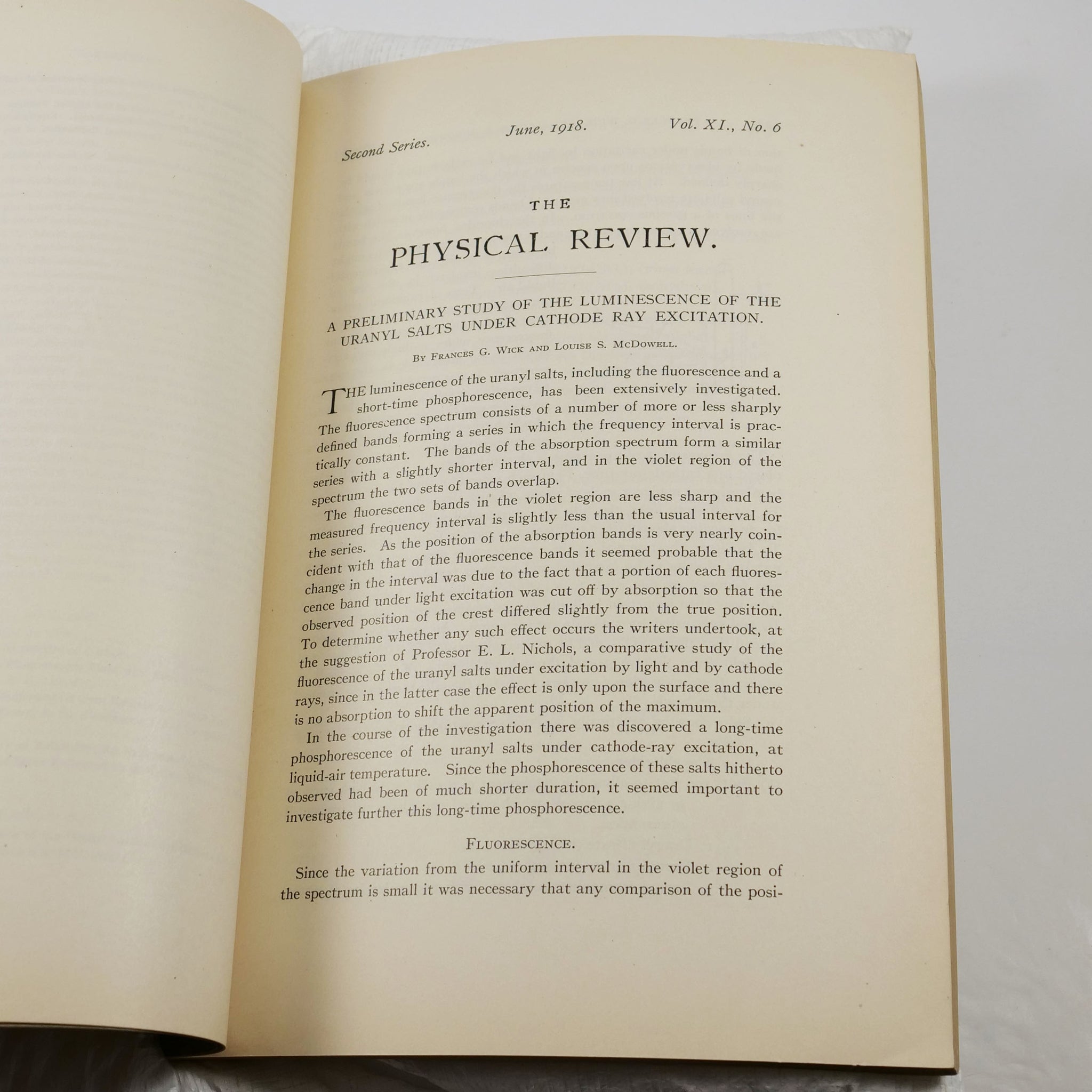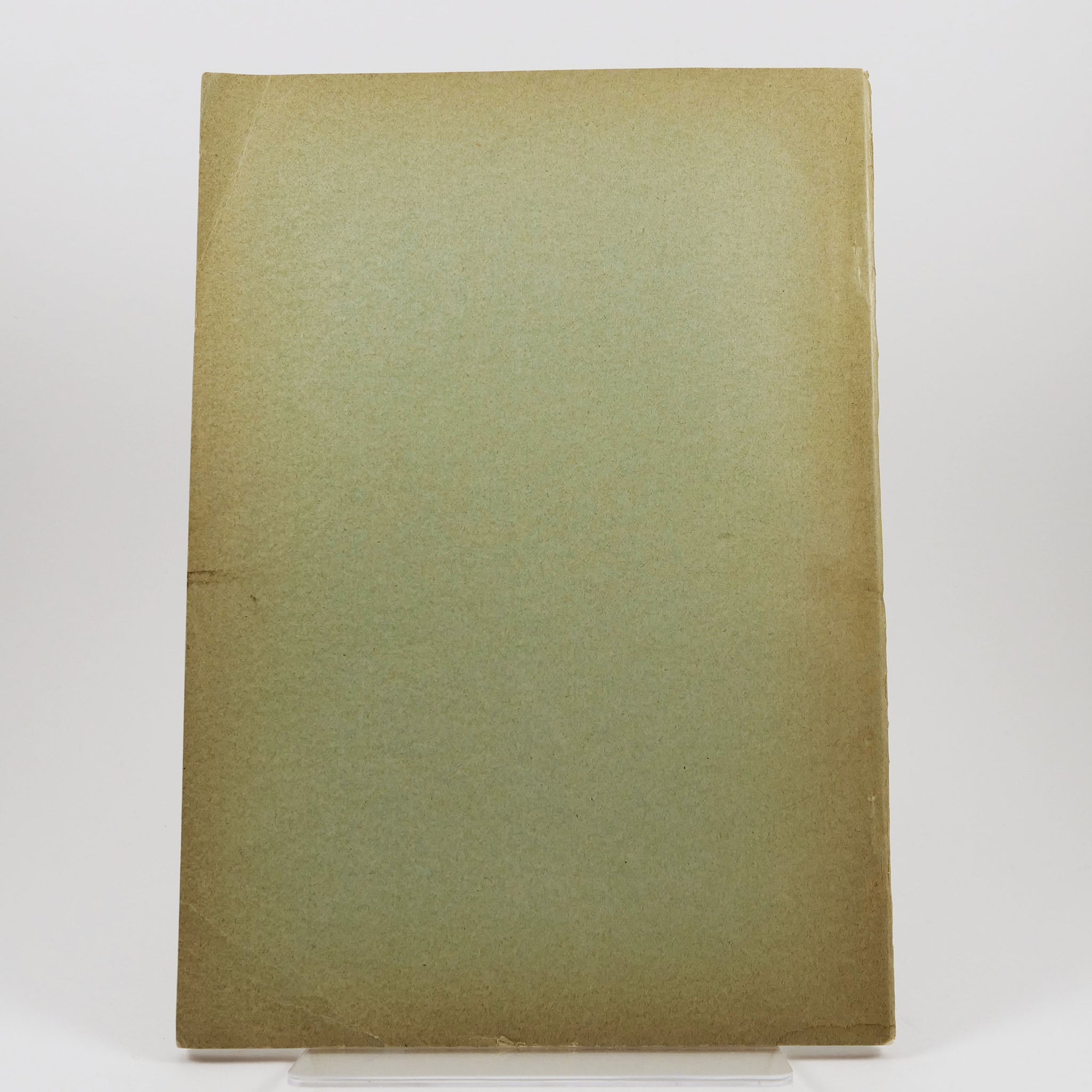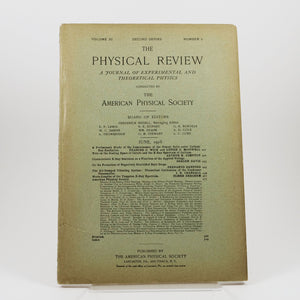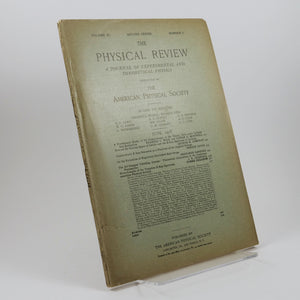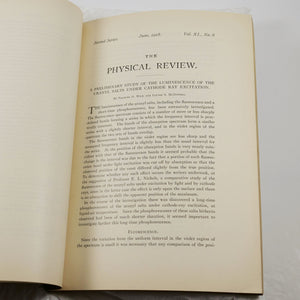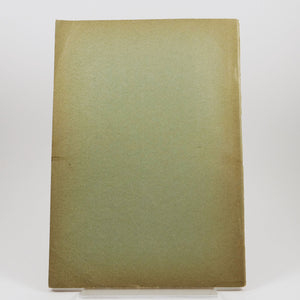Wick, Frances G. & Louise S. McDowell | “A Preliminary Study of the Luminescence of the Uranyl Salts under Cathode Ray Excitation"
£150.00
-
First edition, the journal issue in original wrappers, of a significant paper by two early professional female chemists.
Frances Wick (1875-1941) became interested in physics after teaching a high school course in the subject. In 1904 she enrolled at Cornell where her mentors, Edward L. Nichols and Ernest Merrit, were supportive of women students and introduced her to what would become her primary interest, the study of luminescence. After graduating she taught in women’s colleges, did research at General Electric, Harvard, Cornell, Cambridge, Berlin, and Vienna, and worked on gun sights and radio during the First World War.
Wick “took part in comprehensive studies of the fluorescence of uranium compounds coordinated by Nicholas and funded by the Carnegie Institution. During the remainder of her career, Wick investigated the luminescence produced by various agents, such as cathode, X, and radium rays; heat; and friction; as well as the effects of previous exposure to radiation on thermoluminescence… Wick was known as an inspiring, enthusiastic teacher who loved her research. She was well respected for her extensive experimental research on luminescence” and “was a Fellow of the American Physical Society, the Optical Society of America, and the American Association for the Advancement of Science”, as well as a member of numerous other research and teaching associations (Ogilvie, Biographical Dictionary of Women in Science, p. 1375).
Wicks’ co-author, Louise McDowell (1876-1966) also attended Cornell as a chemistry student, and the two became good friends. Her dissertation on the electrical properties of selenium “was one of the early studies of semiconductors. She investigated crystal detectors for the Signal Corps during World War I. Her determination of power loss in dielectrics provided much useful information on properties of different insulators, especially glass” (Ogilvie, p. 866). With Wick she studied luminescence and during the Second World War she worked on radar at Harvard for the U.S. office of Scientific Research and Development. Like Wick, she was also a respected and devoted teacher and member of numerous professional societies.
-
...[in] The Physical Review, volume XI, number 6. Lancaster, PA & Ithaca, NY: The American Physical Society, June 1918.
Octavo. Original green wrappers printed in black. 1 plate, 3 leaves of ads at rear. Spine and edges of wrappers tanned, wear along the spine with a closed tear in the upper wrapper near the tail and loss from the head of the spine. Very good condition.




